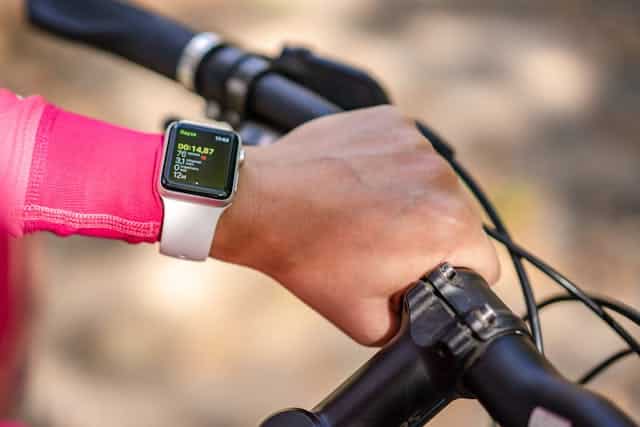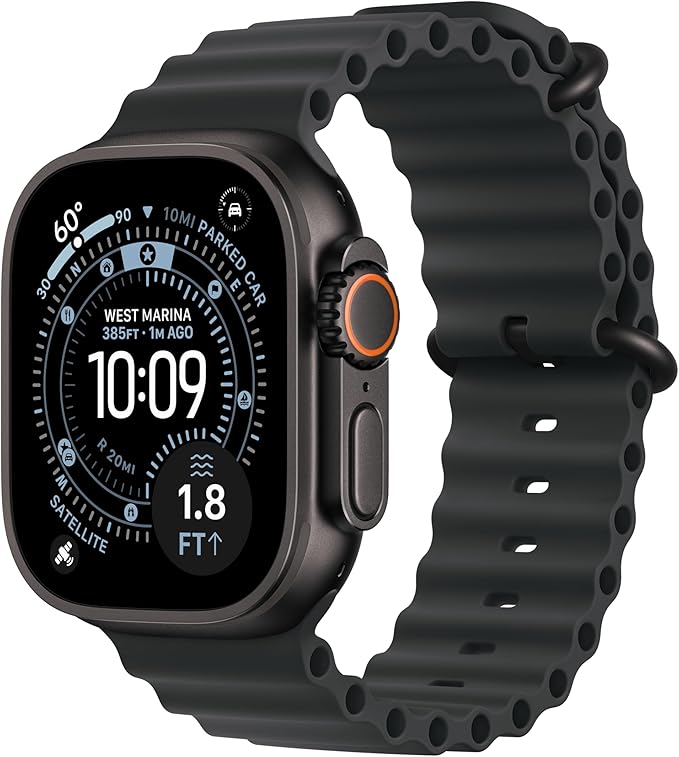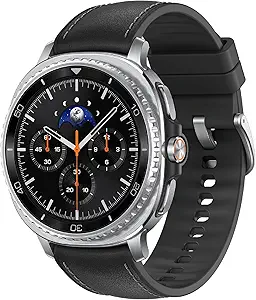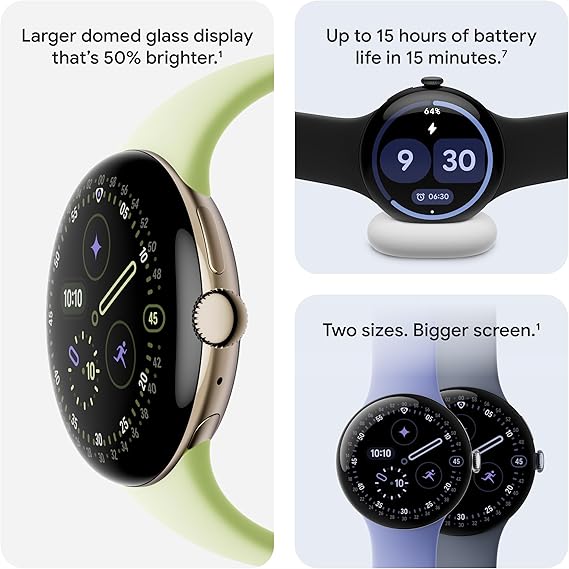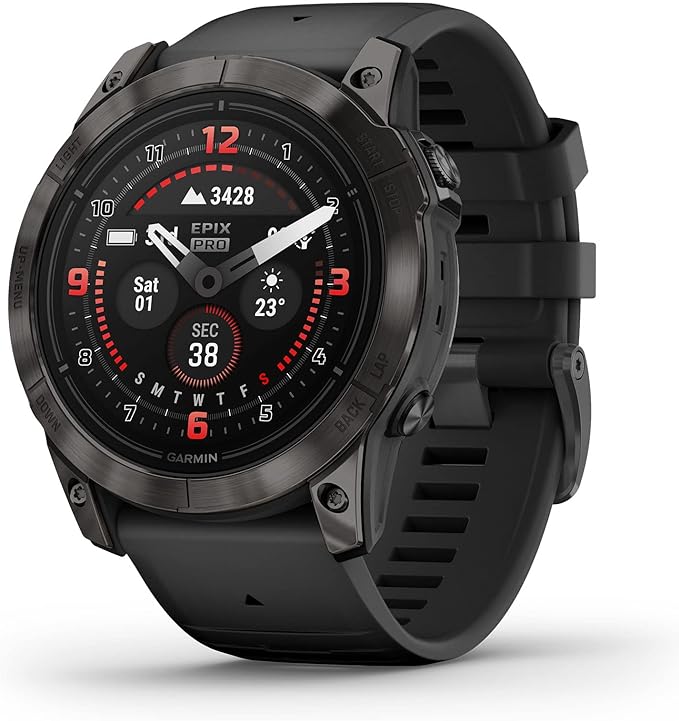Last Updated on October 10, 2025 by Luis Cooper
Smartwatches no longer just count steps—they now recognize patterns in your heart rhythm, sleep, stress, and even blood pressure risk, then turn those signals into advice you can act on.
In 2025, the big leap isn’t a new sensor; it’s smarter models that fuse multiple signals, learn your baseline, and surface timely nudges you’ll actually use.
This guide explains how today’s AI on the wrist works, what’s new this year, what the science says about accuracy, and which brands are doing what—so you can separate real benefits from marketing noise.
How AI Is Transforming Health Tracking in Smartwatches:
What’s new in 2025: from tracking to coaching
Two shifts define 2025 wearables.
First, on-device AI now handles more inference right on the watch, so you get faster feedback and better privacy.
Second, sensor fusion turns many “okay” signals into one reliable story: heart-rate variability (HRV) from PPG at night, motion patterns, skin temperature trends, and oxygen saturation combine to estimate stress, recovery, and sleep quality with far less guesswork than before.
Apple added Hypertension Notifications and an official Sleep Score in watchOS 26; Samsung rolled out Vascular Load insights and expanded AI coaching; Garmin kept advancing Training Readiness with HRV-anchored recovery models.
These aren’t diagnostics, but for day-to-day decisions (when to rest, when to push, when to call a doctor), they’re getting meaningfully more useful.
How AI health tracking actually works:
At a high level, your watch collects continuous signals—PPG heart rate, HRV (especially during sleep), accelerometer/gyroscope (movement and posture), skin and ambient temperature, SpO₂, and sometimes EDA (skin conductance).
AI models then:
-
Clean and segment the data to remove motion noise.
-
Compare to your baseline (your “normal” varies by person and by time of day);
-
Fuse multiple signals to infer states like stress, sleep stage probabilities, or recovery;
-
Trigger insights (e.g., “low recovery,” “possible hypertension risk pattern,” “earlier bedtime suggested”).
A practical example is stress: Fitbit’s cEDA/Stress Management Score uses electrodermal activity, HRV, and movement to personalize daily stress coaching; Garmin’s Body Battery/Training Readiness leans on night HRV, sleep quality, and load to time hard sessions; Samsung’s Vascular Load examines cardiovascular strain during sleep; Apple’s watchOS 26 layers hypertension risk notifications on top of existing heart rhythm monitoring.
None of these features diagnose disease, but they can spotlight patterns worth discussing with a clinician.
Accuracy: what’s solid—and what still needs caution
Context matters. HRV captured at night, at rest, is generally the most reliable from wearables.
Peer-reviewed studies in 2024–2025 show nocturnal PPG-derived HR/HRV can align reasonably with a chest-strap ECG for some devices, though accuracy varies by brand, sensor quality, and artifact handling.
In recent lab work, agreement ranged from poor to substantial across products; rings like Oura and straps like WHOOP often lead, with watches improving but still sensitive to movement and fit.
Earlier research showed weak HRV agreement in some Garmin models; current algorithms are better, yet PPG isn’t a full ECG, and daytime HRV (with motion) remains noisy.
Treat the numbers as trends, not absolute medical values—especially for stress.
ECG vs PPG:
A single-lead ECG on the wrist can screen for AFib, but it is not a 12-lead hospital ECG. Samsung’s new cardiology work, like LVSD (heart-failure risk) screening via PPG algorithms, is currently framed for general wellness rather than diagnosis.
That’s the right mental model: AI wearables are early-warning and lifestyle tools; medical concerns still go to a clinician.
Brand-by-brand: (2025)
Apple (watchOS 26: Series 11/Ultra 3)
Apple added Hypertension Notifications and a Sleep Score system that turns raw sleep staging into a single, color-coded rating, alongside existing ECG, irregular rhythm, and sleep apnea notifications.
The software leans into on-device analysis and subtle UI nudges rather than heavy “coaching.” If you live in Apple’s ecosystem and want consistent, privacy-minded health features, this is the benchmark for polish.
Samsung: (Galaxy Watch 8 / 8 Classic)
Samsung’s Vascular Load and broader Galaxy AI coaching aim to connect sleep quality, stress, and cardio strain.
Sleep apnea detection (region-dependent) and body composition remain unique hooks, while the platform is experimenting with algorithmic screening for cardiac issues like LVSD through PPG.
Samsung positions many features as wellness insights, which helps them ship broadly while clinical validations continue.
Google/Fitbit: (Pixel Watch 4 + Fitbit platform)
Fitbit’s Stress Management Score and cEDA keep it strong in stress detection and coaching, with Pixel Watch integration tightening the loop between sensors, daily habits, and actionable prompts.
The focus remains practical nudges—breathing breaks when cEDA spikes, sleep schedule suggestions, and trend-based readiness guidance—rather than clinical claims.
Garmin: (Fenix/Epix/Forerunner/Venu)
Garmin’s edge is training-centric AI: Training Readiness, Endurance Score, and HRV-anchored recovery work best when you train regularly and sleep with the watch.
Garmin’s models excel at linking load + sleep + HRV into a single readiness cue athletes can follow.
Accuracy of HRV varies by model and conditions; use night-time trends and pair with a chest strap for precision workouts.
What to do with these insights: a practical playbook
-
Anchor your readings during sleep. Night-time HRV and resting heart rate are your most dependable baselines. Compare nights to your own average, not to anyone else’s.
-
Watch trends, not single numbers. Look for multi-day patterns—e.g., several low-HRV nights plus poor Sleep Score—before changing training or booking a rest day.
-
Wear correctly. A snug fit (one finger above the wrist bone), clean skin, and consistent wrist choice reduce PPG noise and false stress flags.
-
Use “readiness” to plan load. If Training Readiness or similar is low and your schedule allows, swap intensity for technique or mobility work.
-
Escalate the right alerts. Irregular rhythm, repeated high blood-pressure risk notifications, or persistent low SpO₂ deserve a medical conversation—that’s the job of these tools.
Privacy and Safety:
On-device AI reduces cloud dependence, but sharing and backup still matter.
Read each brand’s privacy settings, review what gets uploaded to the cloud, and decide whether to share data with coaches or family.
Apple’s hypertension feature and Samsung’s LVSD screening are intentionally framed to inform, not diagnose, which protects you from over-relying on a watch for medical decisions.
Quick comparison of AI health features (2025)
| Brand / Platform | What AI focuses on | Notable 2025 addition | Works offline? | Who benefits most |
|---|---|---|---|---|
| Apple watchOS 26 | Sleep, heart rhythm, risk notifications | Hypertension Notifications, Sleep Score | Many inferences on-device | iPhone users wanting polished insights and strong privacy defaults |
| Samsung Watch 8 | Sleep, stress, cardio strain | Vascular Load, Galaxy AI coaching | Mixed (phone + watch) | Android users who want wellness coaching and body-comp data |
| Google/Fitbit | Stress, sleep, gentle coaching | cEDA refinements + Stress Management Score | Mixed | People who value simple, daily nudges to manage stress |
| Garmin | Training readiness, recovery, and endurance | Model-wide refinements to readiness/recovery | Largely on-device | Athletes planning load around HRV, sleep, and training status |
Conclusion:
AI on the wrist is finally shifting from “interesting graphs” to credible guidance—especially at night, when the signal is clean. Apple leads in polished health features with new hypertension risk notifications; Samsung is pushing cardio-strain and sleep coaching with broader AI; Fitbit remains the stress-tracking coach; Garmin translates the same inputs into training-ready decisions. The tech won’t replace a doctor, but used well, it can help you sleep better, train smarter, and spot issues sooner.
Related Articles:

